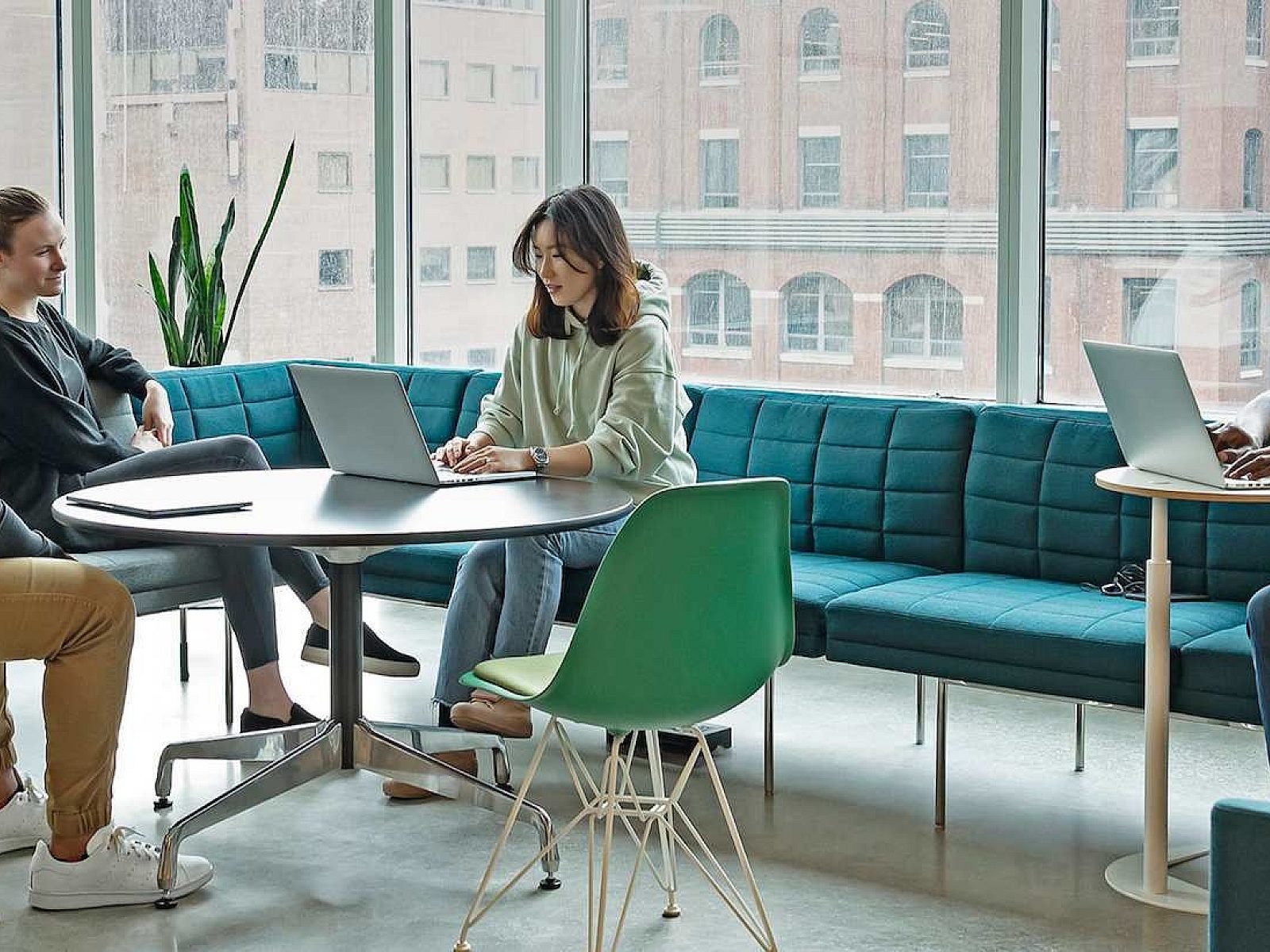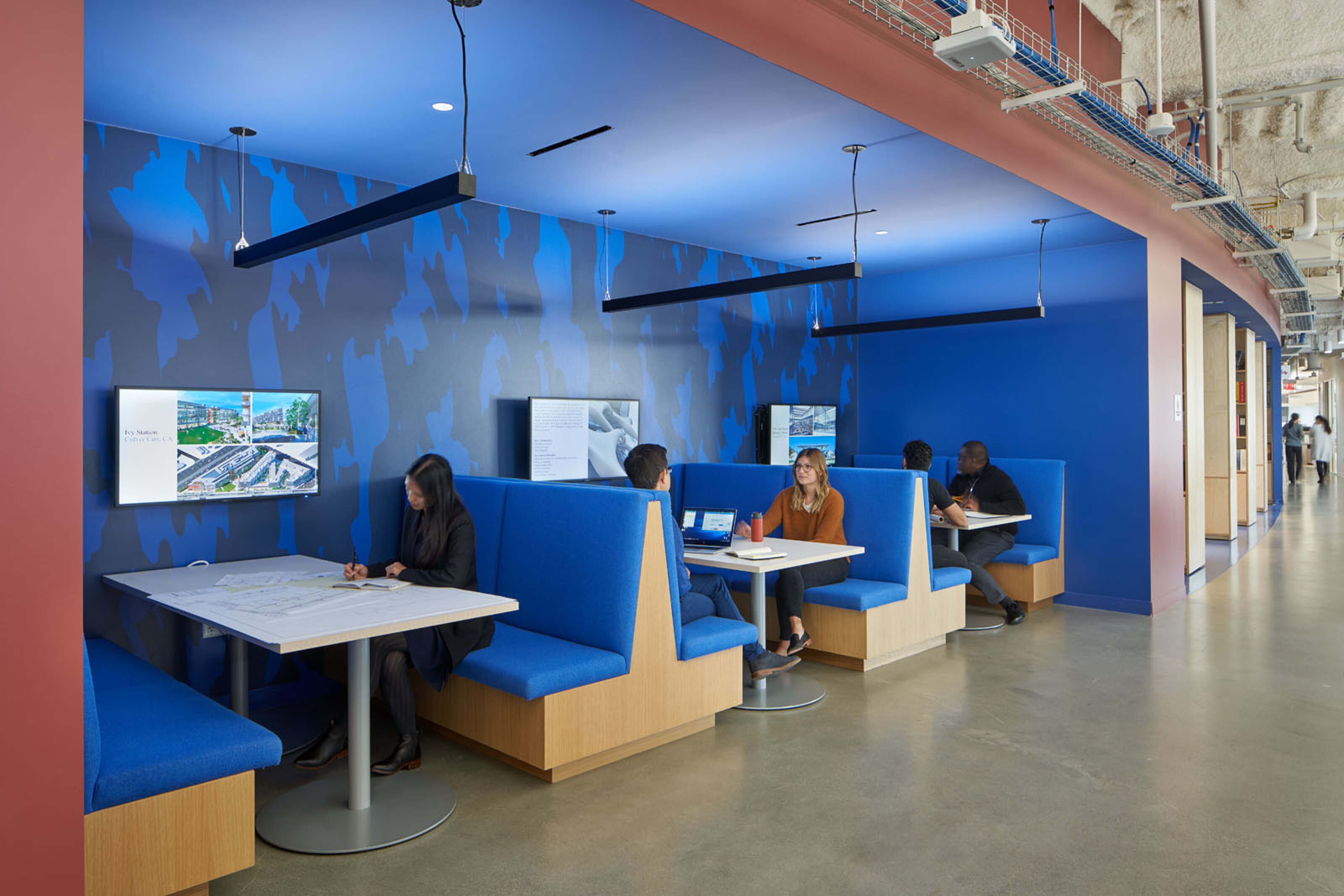How Technology Drives Today's Workplace
Last month, we joined Ryan Anderson, Vice President of Global Research and Insight at MillerKnoll, to gather insight into how technology is a driving factor in today’s workplace.

“What is our greatest takeaway as far as strengthening and “future proofing” technology for offices? That people’s personal technology – their laptops, phones, and tablets – are the heartbeat of their productivity. Accommodating those devices and extending the software used on them – video, digital whiteboarding, and beyond – in a wide variety of locations is the key to seamless hybrid spaces.”
-Ryan Anderson


Last month, we joined Ryan Anderson, Vice President of Global Research and Insight at MillerKnoll, to gather insight into how technology is a driving factor in today’s workplace. Particularly for hybrid workers, the need for workplace design that not only supports but leverages technology is the answer to many of the productivity and engagement questions the pandemic left us with. Ryan covered five foundational concepts for better utilizing technology in the workplace.
1. We can keep pace if we pay attention.
“Don’t be afraid of technology-it moves slower than we have heard,” noted Ryan.
Technology typically evolves over the course of conceptualization, adoption by wider society, a peak of expectations, then commercialization. If the technology is successful, it reaches a “plateau” of productivity that marks widespread use in the workplace. This can take up to 15 years, according to Ryan, so it is wise to watch and make investments when technologies begin to become adopted.
2. Hybrid work is an overdue response to distributed work. In reality, work has been spreading out across offices and beyond for the past 15 years.
Remote work strategies are a means of supporting distributed workforces, simply providing greater choice what location individuals work in – whether it is an office across the country or a home space.
3. Technology should support what is already in your employees pockets and homes.
Consumerization of technology has reshaped our work experience and expectation over the last decade with much more intuitive and simple options, while improving affordability and wider access. To be successful, your workspace should leverage what is available to consumers, and we should support personal devices, apps and software.
4. We need to rethink our idea of where collaboration happens beyond the traditional conference room.
Collaboration has, and continues to, evolve and include distributed work and the use of software platforms. Collaboration can be synchronous or not, and should take into consideration that the more distributed the team, the less synchronous the collaboration may be.
5. Physical workspaces still matter.
While there has been a rapid digitization of work, nimble workspaces will be successful if they retain the ability to leverage how individuals use their devices, while providing spaces that meet needs like social or community gatherings or quiet workspace – needs that can’t be met in a home environment. Let technology inform your space, such as designing for a digital screen to support technologies like Miro rather than a whiteboard.

Remote is not a location, but the untethering of work.
If your organization supports a remote work strategy, employees likely use a lot of spaces-including home and corporate office space. These spaces need to support and utilize mobile technology with power access, wifi, and surfaces and ergonomic support that are consistent with the intended work activity. Designing for a partially remote or hybrid team entails consideration for spaces that can support long duration, asynchronous collaboration and focused, productive work in a distraction free zone. This includes equipping outdoor spaces with power, wifi and the correct ergonomics to allow employees freedom of movement within your office.
Ryan also recommends looking beyond the traditional workstation and creating project rooms of varied sizes, outfitted with easily accessible wifi and power. Gone are the days of the mid-size conference room. Instead. Focus on smaller spaces or booths that allow for small or virtual meetings and large spaces for social events. These investments makes the office attractive for the necessary Zoom or Teams calls that have become commonplace in our workday.




















